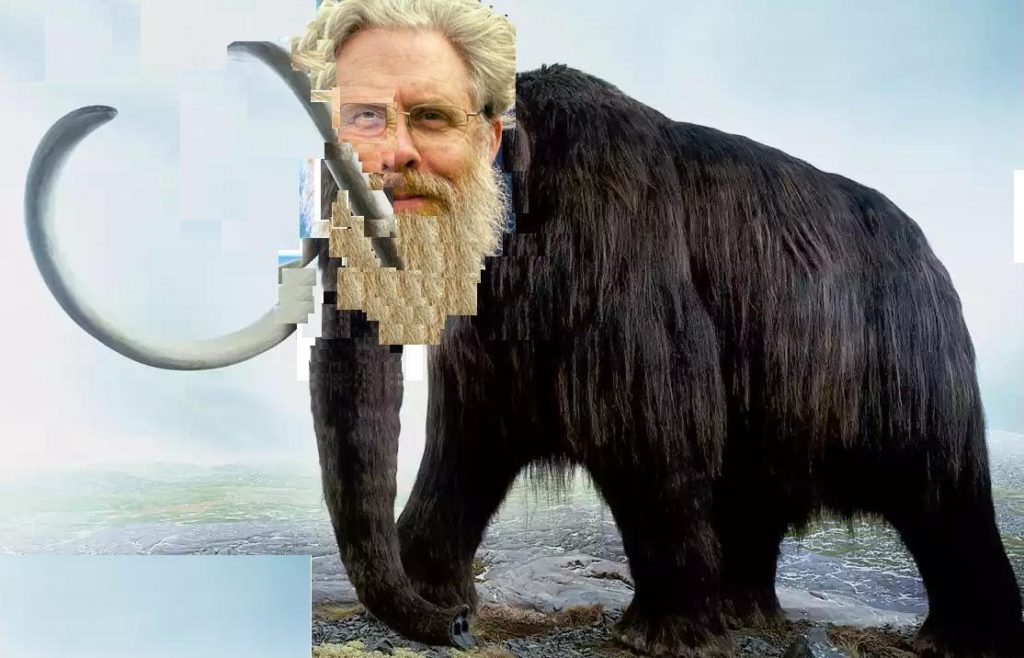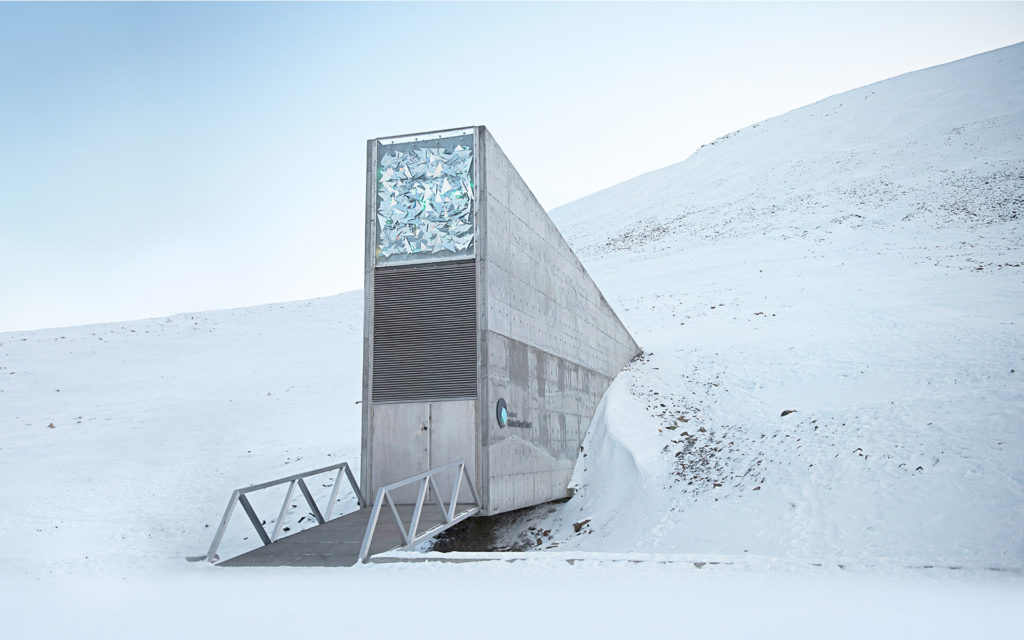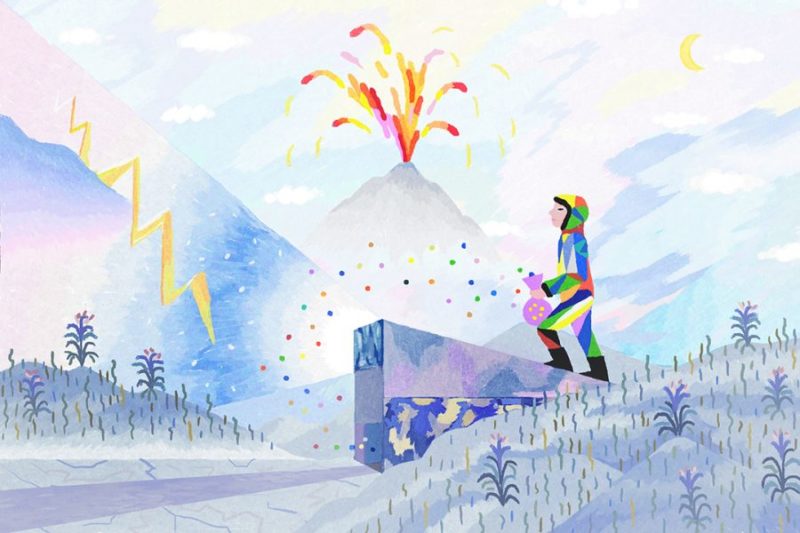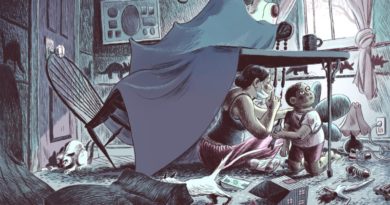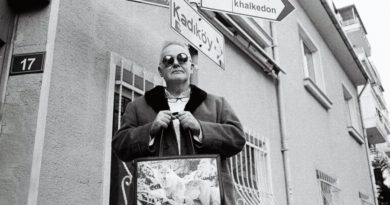Why would we think about biology in terms of "reproduction" only?: The Svalbard Global Seed Vault
A conversation about the Svalbard Global Seed Vault with Sophia Roosth.
Interview by Mehmet Ekinci – Illustrations byAda Tuncer
As part of Bantmag’s Science and Technology Studies (STS) Series this month, we conversed with Sophia Roosth, who rereads technoscientific practices in the life sciences and geology through the lens of feminist, cultural studies, and anthropological theory.
Roosth is an influential thinker who puts cutting-edge technologies that are boosted in the mainstream media and more ”obscure” scientific research (which would maybe only appeal to Agent Mulder from The X-Files) into conversation with each other. As part of her new book project, Roosth visited and did fieldwork in Svalbard, Norway where the Svalbard Global Seed Vault is located. Starting with the specifics of the Svalbard Global Seed Vault, we had a conversation traversing questions at the intersection points of evolutionary biology, queer theory, different imaginaries of speed and slowness in politics and biology, and architectonics that are inscribed with ideas of deep time.
Roosth joined the Department of the History of Science at Harvard University as faculty in 2011 and describes herself ”as an anthropologist in disguise among historians of science.” As Roosth brings together the human-centric perspective of anthropology and particular dispositions of natural sciences to attribute autonomous forces and agencies to their objects of research, she treats the things and people that she thinks with as desiring machines that generate their own theories and practices with an undepletable energy, rather than objects of research to be theorized and understood from top to bottom. Roosth defines her approach to the material world as a mode of lateral thinking and she takes entanglements between things and people seriously rather than considering herself an objective outside observer. Yeast cells that “scream” under microscopes in nanotech laboratories, zombie viruses waiting to be resurrected under the permafrost terrains of Siberia, and biohackers who challenge the presumed omnipotence of biotechonology corporations with their DIY techniques of molecular synthesis are just a few figures that Roosth engages with in her oeuvre. You can read her writings on a wide range of topics in science, technology, sound, noise, and contemporary art on her website.
I know that you did fieldwork in Svalbard recently.
That’s right. It was about a year ago actually. So, not so recently, since it took time to think and write about. So what can I tell you about Svalbard?
How come you ended up studying this remote place on earth? What struck you when you were there? Let’s start with those two questions.
Sure. Actually, Svalbard goes back to my recently published book Synthetic: How Life Got Made. In the final chapter I look at efforts by synthetic biologists and conservation biologists to use synthesis technology and excavated extinct animals, namely mammoths preserved in permafrost, in order to attempt to resuscitate examples of these extinct species.
Kind of a Jurassic Park scenario?
Precisely, very much so. They call it Pleistocene Park. At the end of the final chapter, there were a few ideas that I was taken with and I realized that there was more to be said about these efforts of synthetic biologists to reconstruct extinct animals. First of all, I was intrigued by the relationship between time and temperature, and the ways in which biological time is attached to biological temperature. This is something that has been written about before, the primary examples being Hannah Landecker’s work on freezers and Joanna Radin’s recent book, Life on Ice. But I also became interested in the relationship between biology and nostalgia. Now, the chapter I wrote for my synthetic biology book was fixated on very new technologies like DNA synthesis in laboratory conditions. But I thought there were ways that I could track the role of freezing in the history of biology outside the laboratory. Not just looking at these high technologies but also at low technologies like a negative 20 degrees Celsius freezer.
Then I thought: Ah! I must go somewhere cold where you can find examples of life forms that have been paused and that have been awaiting reanimation, not necessarily because biologists want to do so, but just because that’s part of the natural environment. And one of the examples that I thought about was this seed vault in Svalbard, because it had been in the news and I had read about it. This was a good place to start. I went to Svalbard at the invitation of Cary Fowler, who is the person who had the initial idea and helped design the seed vault. And then what really blew me away was, I get to this tiny frozen archipelago north of the Arctic circle, and the seed vault was, if I may say so, the least interesting thing about the place. There was so much biology on the ground and under the ground, and there was such a rich story about the relationship between geobiologists and coal miners, for example, and the attempts to resuscitate the Spanish flu which had been frozen beneath permafrost. And, of course, when thinking about contemporary biotechnology, this seed vault is something like a gene bank. Thinking about these three different forms of frozen biological life forms in Svalbard — dead bodies of Spanish flu victims, coal reserves, and seed samples inside the vault — I started digging into these ideas of latency, pausing and reshuffling the temporalities, which in biology we are used to thinking about as linear. So that is what I found exciting in Svalbard and that is what inspired my second book project about geobiology.
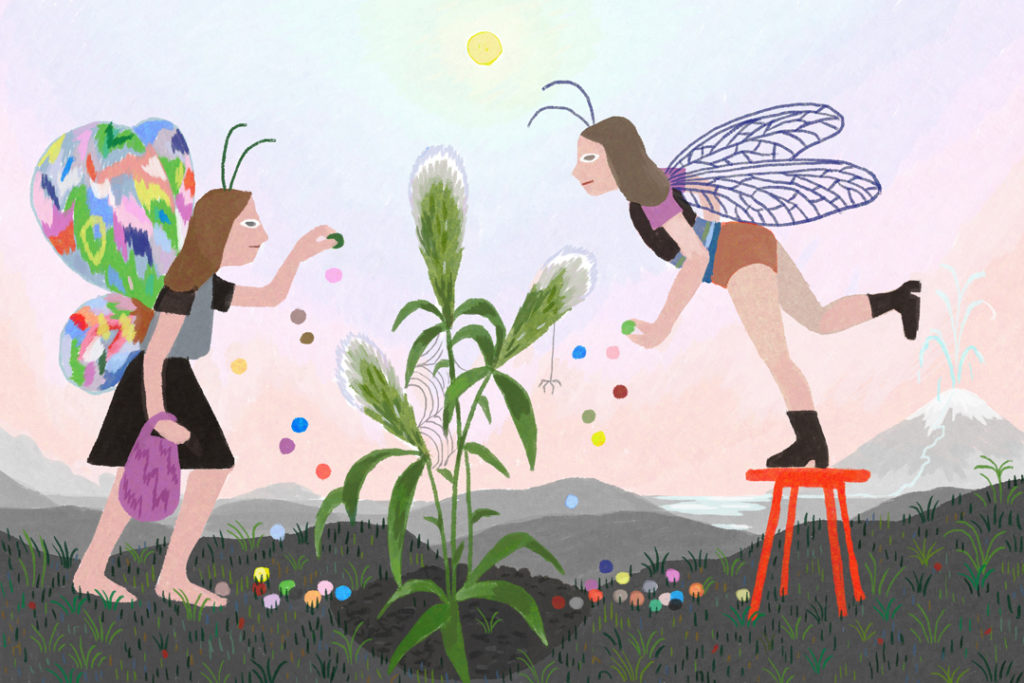
So Svalbard was a laboratory site within a natural landscape rather than a laboratory constructed by scientists who you worked with before.
That is right. For my first book, I spent eight years in laboratories and conferences. It is about synthetic biology, which is a very high-powered, high-financed new discipline in bioengineering. I should say that the question that animated not just the first book but all of my research is how we might think of life as an actors’ category. What I mean by that is to say, life is not something that exists out there in the world, but is something that gets defined by the way biologists (but we’d better remember not only biologists!) interact with, engage with, and think about life. In the first book, I answered that question by looking at efforts to manufacture life in laboratories. What is life when it is best understood not by experimentation but by manufacture? How does that change definitions of life? Then I realized this is not the only way to answer that question. In fact, there are other ways of thinking about life as an actors’ category that don’t require this technical or artisanal approach to life.
And that is what attracted me to the second project, in particular working with the geobiologists who I am talking to now. Geobiology is a broad field that includes geochemists, micropaleontologists and a number of other subfields. These researchers actively ask the question of what life is, not by making it but actually looking at cases where they are not sure whether something is alive or not, whether it might be a trace fossil, or whether the trace fossil could have been formed by physico-chemical processes or by an early life form, and these scientists have to figure that out. One of the things that I learned early on in my research that I found quite surprising was that the origin of geobiology, which I would trace to the 1950s and 1960s, coincides with the foundation of exobiology. So the questions of what the origins of life on earth might be are directly connected to the question of how we identify life on other planets. Now we would call it astrobiology, but earlier it was called exobiology.
Not many people go to these kinds of places up by the Nordic Sea for their anthropological study, fieldwork. There are some research groups that study the Arctic, its geopolitics, the indigenous people living in its hinterland but still I am curious about your arrival to the region. In other words, how does a Science and Technology Studies (STS) scholar end up in the North Pole and what other things struck you while you were there?
Well, I think in many ways doing fieldwork in a place like Svalbard expanded my understanding of what the anthropology of science can be. My first motivation for going there was very much grounded in STS — I’m gonna go and look at a seed bank. But then I started just walking around the archipelago and going, for example, to the church graveyard I wrote about. I mean, you don’t think of a graveyard as a typical STS field site. And yet it was STS-related through and through, because it is attached to the history of the Spanish flu pandemic and to cryobiology, as well as to ideas about the use and ownership of bodies. There were a number of debates surrounding these frozen bodies, whether they were still contagious, and whether the citizens had a right to intervene in these conversations with some of the biologists and epidemiologists who were working there. And then they were able to revive the 1918 flu — I remember that happening in 2005 because it was important for synthetic biologists involved in the project, but at the time I never tracked it far enough back to realize that synthetic biologists were not just resurrecting the flu de novo using synthesis technology. They actually had to go back and find the bodies of the flu victims. And the only way to do that is to go the Arctic Circle.
So, I am interested in the ways in which these natural forms of latency are pressing up against contemporary biology and biotechnology. And I think theoretically that offers a couple of inroads. One has to do with what I would describe as the fixation and hyperbole around speed in the life sciences, which has been written about before by STS scholars, this idea of the promise of the acceleration of technology. I wanted to take a step back and say, what happens when we think about biology as being really slow? What kind of value does that produce, rather than only talking about the value of things that are ever faster, whether technologies or life itself? And related to that, I think there is a way that this is a story that can intervene into some queer theory using biology.
Yes, let’s talk about that. How do you see your observations in Svalbard in relation to queer theory?
Of course. Just as a prologue, there are two strands in queer theory that are particulary relevant and that have shaped my thinking quite strongly about Svalbard. One is the ways in which people are trying to rethink animacy. I’m not thinking of the works of new materialists here. I am thinking about people like Mel Chen, who has pointed out that animacy is itself a category that maps pretty clearly onto racial and sexual hierarchies. Chen does that beautifully using linguistic anthropology. Also, the question of animacy can be addressed head on by reference to biology. If you think about it, anthropologists of biology are perfectly suited to do that kind of work.
The second thread in queer theory that I think is important is about queer temporality and there is brilliant work being done on this very topic right now: the ways in which a queer perspective can undo ideas of temporal linearity, of millennialism, of progress. All of those narratives are very Judeo-Christian, very heteronormative, even the idea of a life course having a particular series of steps that includes, namely, reproduction.
And that is where I get to my point about biology because I think that there are some crypto-heteronormative assumptions embedded in a lot of biological writing and thinking. For example, let’s think about what the definition of a species is. There are around 26 different definitions of species, depending on which sub-discipline of biology you look at. But the one that is used most often, the canonical definition of a species, is a group of organisms which are reproductively isolated and continuous from one generation to the next. When you start looking at these latent forms of life that I came across in Svalbard, you realize that much of biology does not work that way. This idea of reproductively isolated, continuous generations is not the way most biology works. Also, a lot of writing in the field of biology privileges reproduction as the thing that is definitional of life, right? There are, however, many capacities that mark life. These can include, for example, responsiveness or metabolism, yet we always only talk about reproduction. So what happens when you think about life as non-reproductive? As paused, frozen, and waiting for reanimation, but not doing anything? What happens when you think about life as discontinuous? As not about one generation being followed by the next in a linear order, but rather as something that stops and starts, and is layered within the present. That is how I see this work contributing to feminist STS and anthropology of biology.
If we revisit the seed vault in Svalbard as part of our conversation, what else would you like to say about it? Some people proposed conspiracy theories, saying that it’s a white supremacist and elitist project. Others call it a modern Noah’s Ark project, not filled up with animals but plants and seeds. There is also the relationship of the seed bank to global politics of agriculture and food production.
One crucial thing is to disassociate the way the vault has been talked about in the news from what the aims of its founders were. I was personally taken with the conspiracy theories because I find them fascinating. But there is also the kind of rhetorical work that is done by journalists. Calling it an “ark,” for example, or talking about it as the “doomsday vault.” Those are powerful words that create a certain mystique around the vault and if you talk with people who helped to fill the vault or those who maintain it, their aims were less about doomsday and more about protecting global crop diversity. In that sense, I think there is a risk of mediatizing something that is actually not very new. You know, seed banks were a significant part of the Green Revolution. That was how seeds were stored and distributed in developing countries like Mexico and India. This is during the previous century, of course. So the seed vault in itself is not that novel. The question is, where is the novelty? I think that, by its very existence, the seed vault is actually telling a story about the failure of the Green Revolution. First of all, instead of trying to maintain standardized crops such as those used in the Green Revolution — for example, the same kind of rice being moved from one nation to the next – the seed vault focuses on crop diversity, which is a different model. It stores not just the seeds that continue to nourish the majority of the world, but also forgotten seeds, heirloom seeds, seeds that are endangered in some way. The second important thing is that this seed vault is not in the US. Nobody would want to take the global diversity of agriculture and put it in the United States anymore.
Why do you think that is the case?
I am not a historian of the Green Revolution, but I think the shift from colonial to postcolonial transnational politics has impacted the ways in which we think not only about which crops should be where but also who has a right to keep them. Therefore, Norway was chosen to be the site of this vault for a number of political reasons, but also climatological ones. I should also say that, as a structure in itself, the vault is totally astonishing. First of all, it is freezing. It is really, really cold. And it is amazing that it’s maintained naturally. Because of the way the vault was built, and because it is so deep beneath the mountain and the permafrost, it would maintain temperatures below freezing for the next two hundred years even if the electricity were off. You are in a mountain under permafrost. It looks like a cathedral dug into the rock beneath the ground, covered in reinforced concrete and whitewashed. It is so beautiful; he vault makes you feel like you are in a religious space rather than a laboratory or a seed bank. When I asked to go to the vault and talked to Cary Fowler about it, he said ”there is no reason why you should come all the way to the North Pole to see the vault; there is nothing really that you can’t see in the photographs.” But I would not be able to write about it without being there in person. Because it is a totally different experience. And to be able to make the connection between the vault and these much earlier examples of natural freezing in Svalbard was key to historicizing the relationship of time to temperature.
So it is some sort of a sustainability project.
Yes. And they are proud of the fact that it is a sustainability project. It is very easy to maintain. They don’t have a crew of workers who are there all the time. And it remains empty except for a few days every year.
Do they have any future scenarios as to how this seed vault would be put in use?
Yes. Here, I would come back to the point about doomsday. The media often talks about this place as insurance against a possible global ecological disaster which raises questions like, ”If civilization is going to fall apart, how are we going to get to the North Pole?” For the founders of the seed vault, that is not the point. More important to them are the ways in which the vault is already being used. The first countries in line to deposit seeds in the vault on the day it was opened were nations that were already destabilized. Syria already had a seed vault that was located in the periphery of Aleppo. The people who ran the Aleppo vault wanted to preserve the heritage seeds of the Levant, and they could not do that in the midst of war. These were the first seeds put in the vault. They were later taken out of the vault and sent to ancilliary seed vaults in Lebanon and Morocco. This example clearly demonstrates that the vault in Svalbard is not about doomsday, but rather intervenes into our contemporary situation with respect to particular political and ecological vulnerabilities in different parts of the world, on a more realistic time scale. Another country that reached out to the people running the seed vault in Svalbard was Pakistan. Because of the catastrophic flooding, because of the political issues that were happening at the time, such as the assasination of Benazir Bhutto, Pakistan was another country that said on day 1 of the vault, ” we would like to put our seeds here.” They felt that they could not guarantee that their own national seed vaults would be able to withstand such ecological and political catastrophes.
Speaking of sustainability, when I watched Peter Galison’s recent documentary Containment on the future management of nuclear waste in light of your work on the seed vault, I noticed some parallels. Could you comment on that?
Yes, Peter Galison’s documentary is about the waste isolation pilot plants and the kind of architecture that is designed for deep time. There are a few other examples related to this topic. I am not sure if you are familiar with the Center for Land Use Interpretation. This is sort of an intellectual art group who writes about deep time architectures. There is a lovely phrase to talk about these structures. They say that they are ”technogeomorphological mounds.” And later in the same essay they say, ”a deadly anachronistic time capsule.” The point that they are making, which Peter is also making, is that these are architectures that are built to be left alone. They are supposed to last forever. But they are also being designed to be impenetrable forever. I think the seed vault is also a technogeomorphological mound; it is also a building that is designed for forever. But there is a reversal, right? Because what is being maintained is not something that is profoundly dangerous, like nuclear waste. The seed vault is put in place in the hope that people won’t need to use it (although they already are). Instead of trying to enclose ecological catastrophe, it is trying to preserve these seed samples from all around the world. It is a way of trying to safeguard salvation rather insulate against demise. It the obverse of these other structures. If we think of similar examples of architectonics from other places, I know that there are efforts in Russia to build archives under permafrost, not seed archives but actual archives. So this is another connection between architecture and deep time and coldness. I was presenting my research project a few months ago to the Media and Modernity Program at Princeton, and there were a number of historians of architecture in the room who made a connection that never occured to me, to medieval churches and cathedrals, which were also built with this expectation that they would remain standing until doomsday. These were buildings that people explicitly designed in order to last as close to forever as possible. I am way out of my league now, I don’t know that much about medieval architecture, but that moment when I walked into the vault and was reminded of a church, it resonated with that comment and it made me think about scientific spaces that have a design some would call the ”techno-sublime”, which generate affects similar to other sublime places that are elsewhere achieved via religion or architecture.
